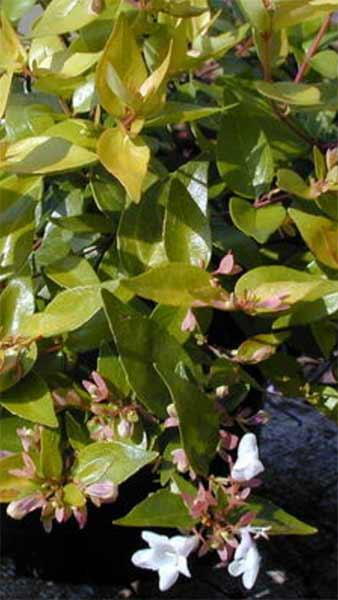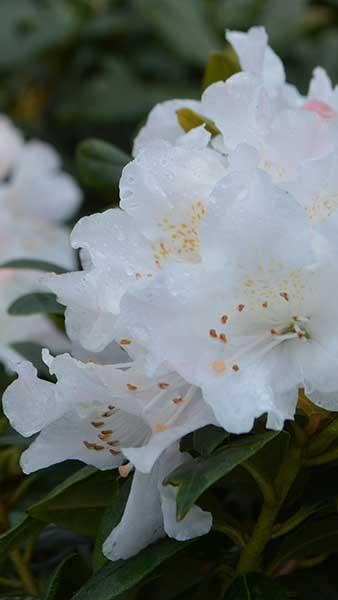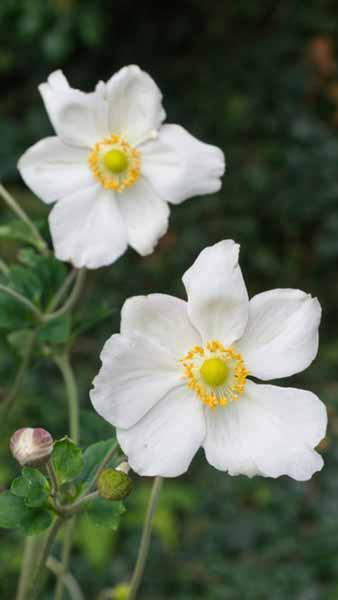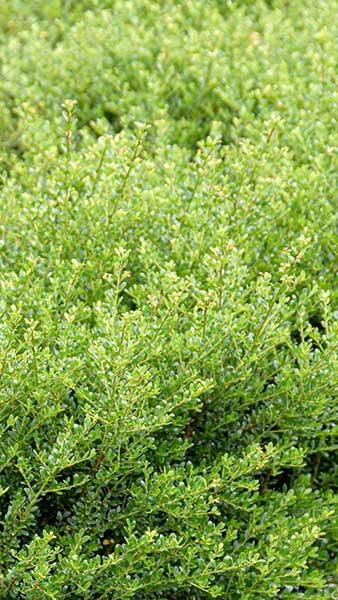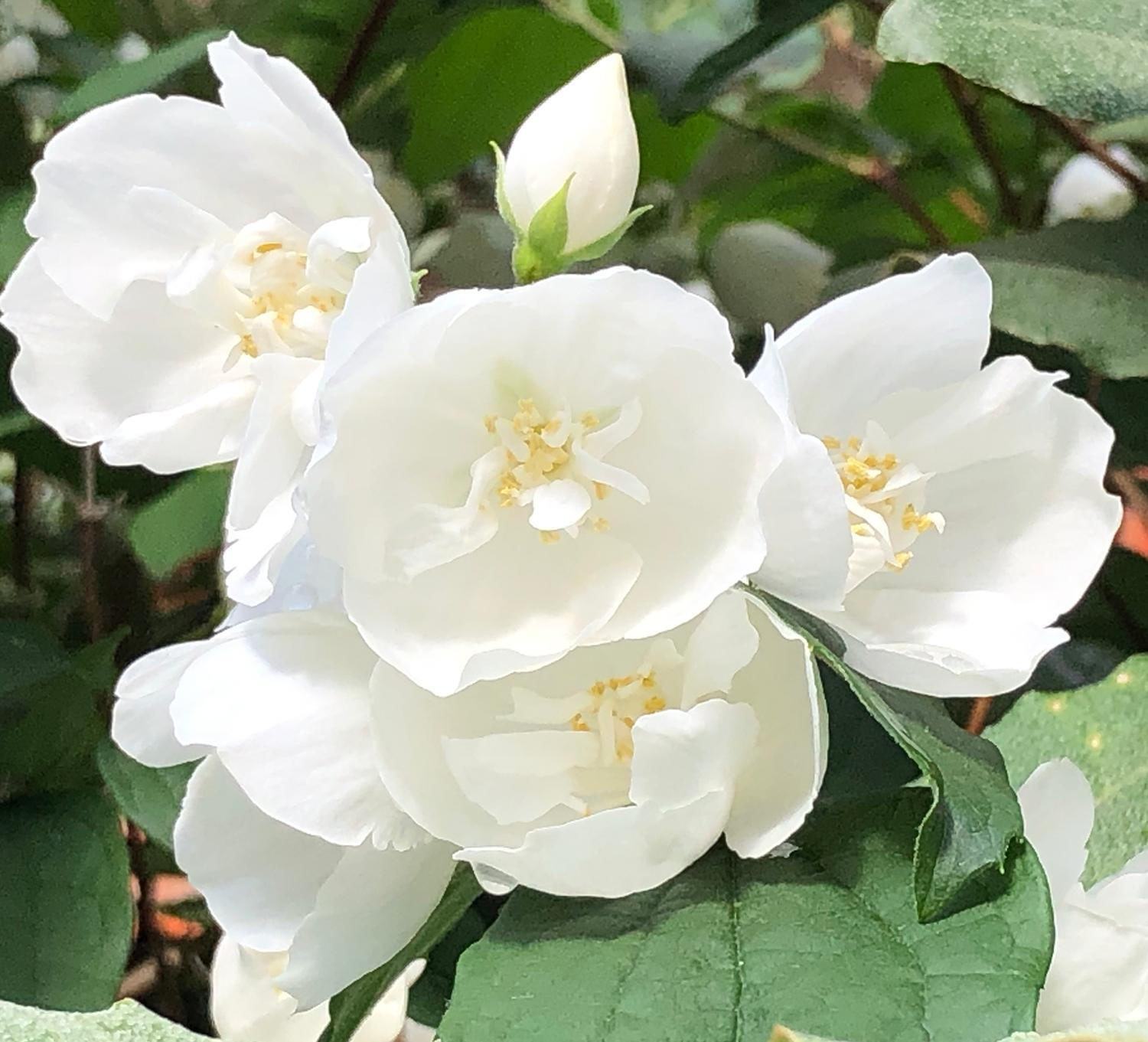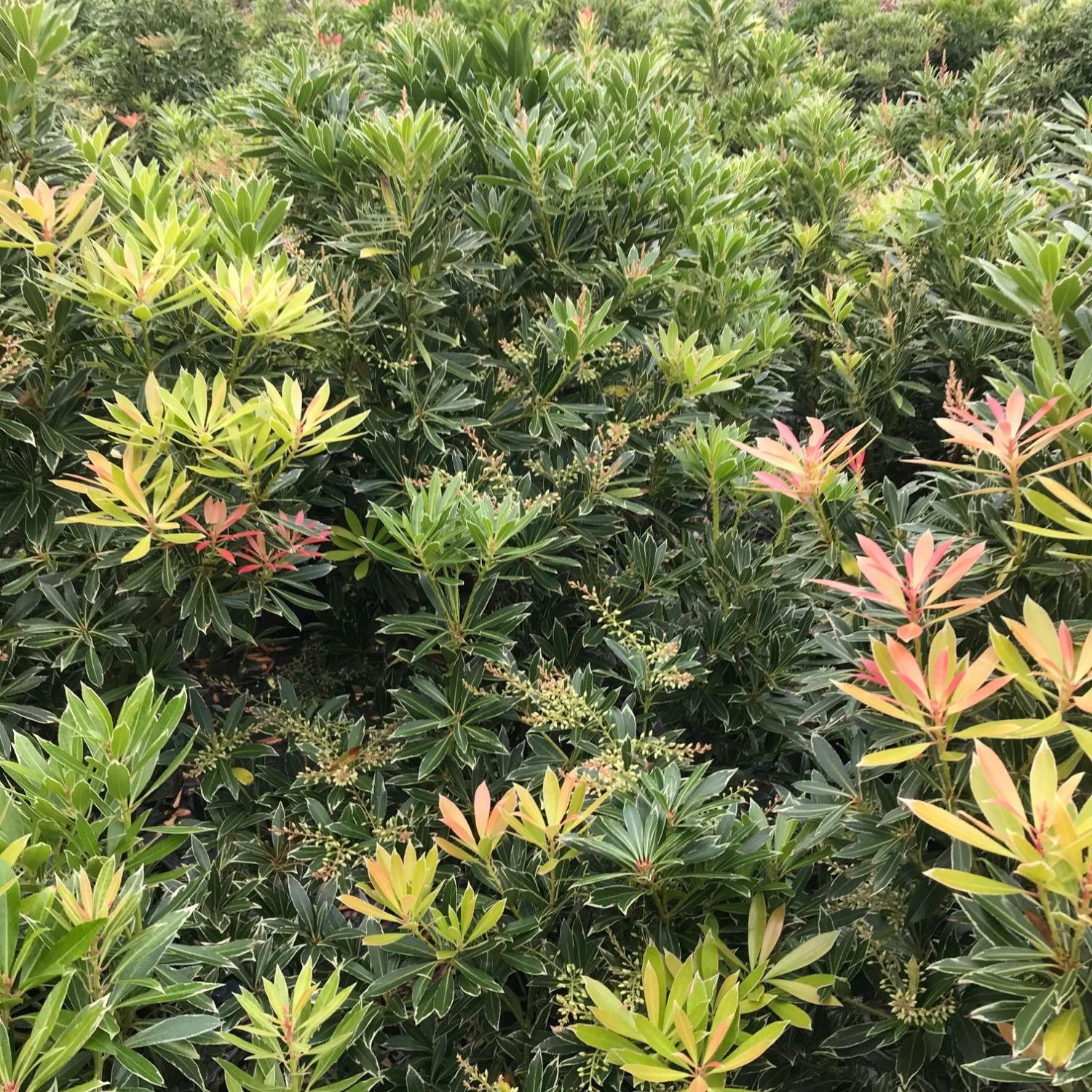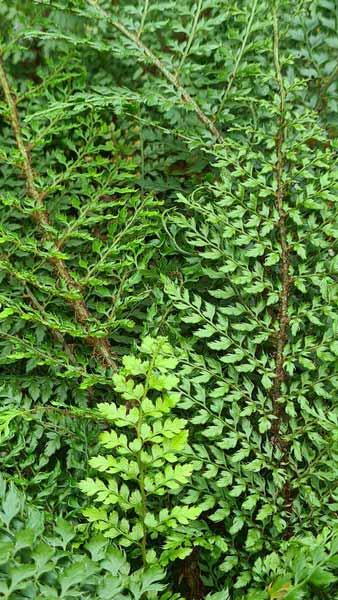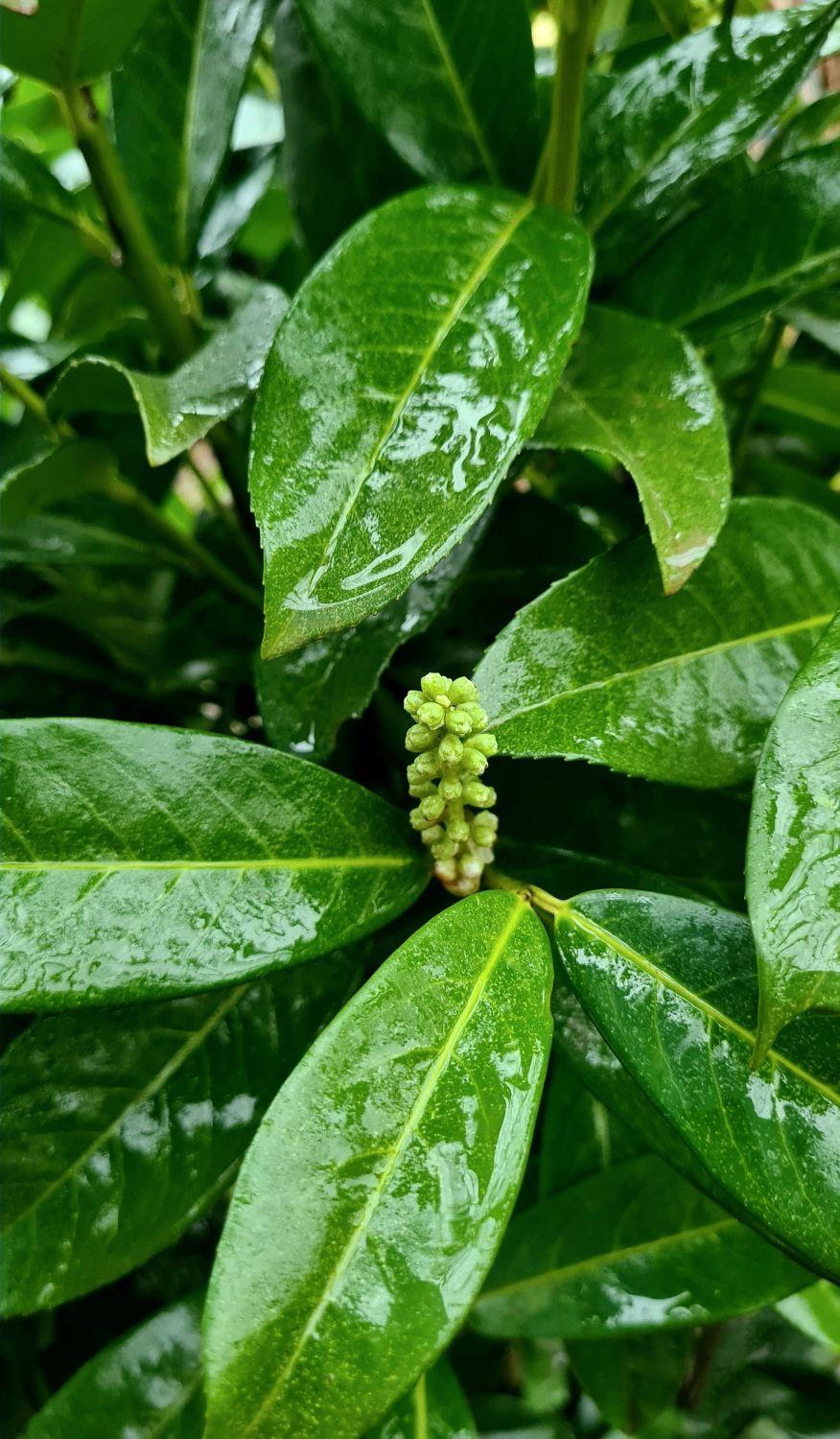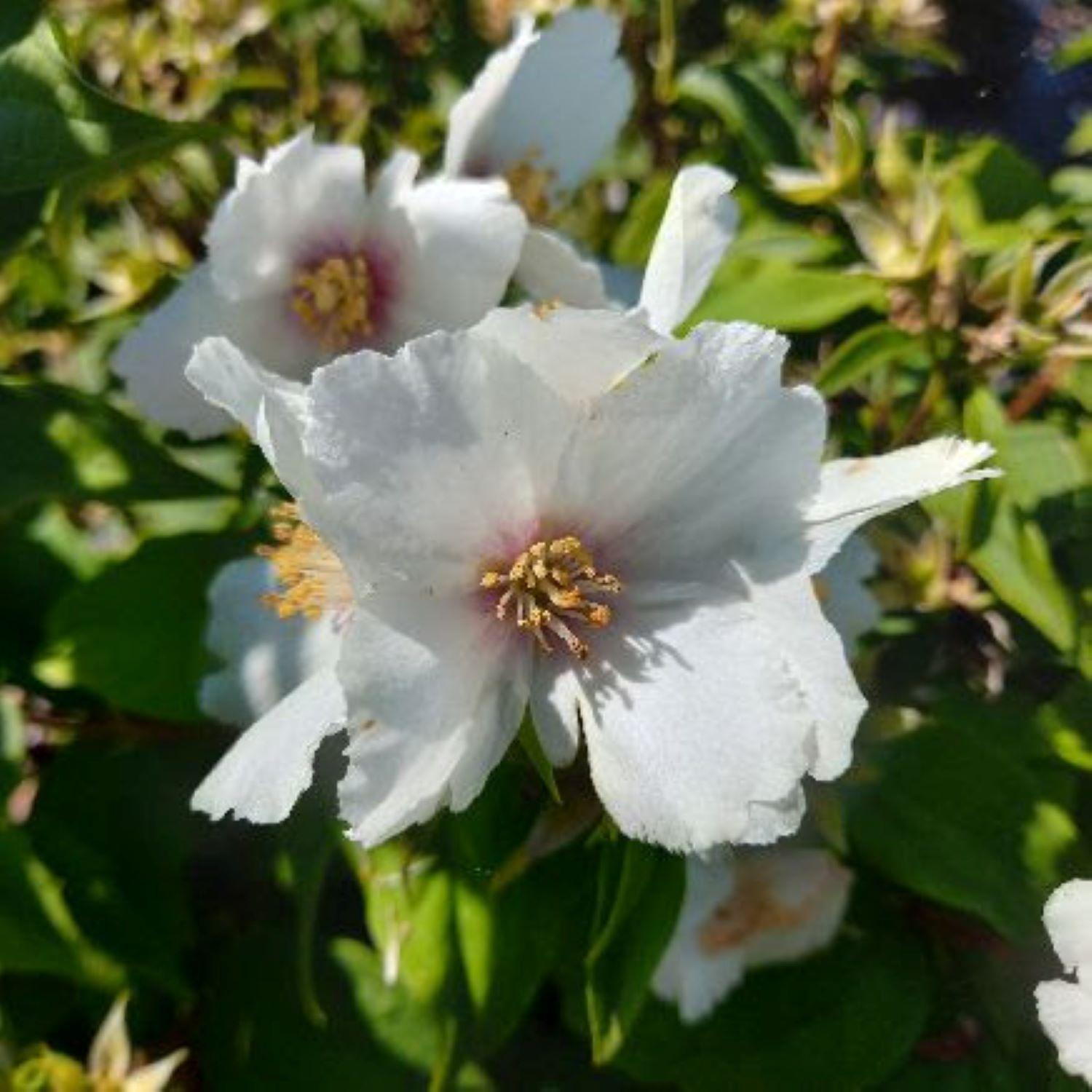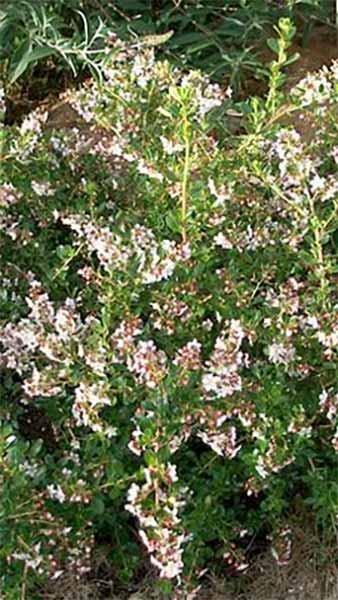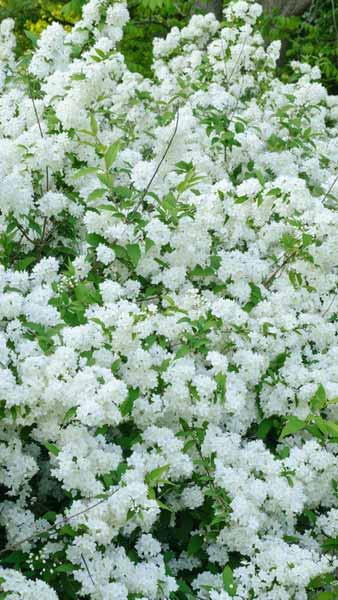Dwarf Rhododendron Dora Amateis White Flowering Variety
Dwarf Rhododendron Dora AmateisDwarf Lepidote Hybrids are an alpine family of low-growing Rhododendrons, including the well-loved Rhododendron Dora Amateis, generally considered to be one of the finest of the white dwarf hybrids. This semi-dwarf evergreen shrub stands out for its compact shape and free-flowering habit. Around April or May, it produces a profusion of broadly funnel-shaped, slightly fragrant white flowers that are around 5cm across. Flowers are produced in trusses of 6 to 8 flowers, and can sometimes have very faint pink and green spotting. Foliage is mid to pale green. If grown in full sun, the leaves can take on a bronze tint.Rhododendron Dora Amateis was originally bred in the United States in 1951 by Edmond Amateis from New York. It has gone on to thrive in European climates. As a testament of its qualities and performance in UK gardens, Dwarf Rhododendron Dora Amateis holds the Award of Garden Merit (AGM) by the Royal Horticultural Society.Height and Spread of Dwarf Rhododendron Dora AmateisWith a naturally rounded bushy growth habit and compact size, this semi-dwarf rhododendron tends to grow wider rather than taller. Its maximum size is around 1.5 metres in height.How Hardy is Dwarf Rhododendron Dora AmateisFully hardy in the United Kingdom, Rhododendron Dora Amateis can survive in areas with severe subzero temperatures- up to -15 degrees Celsius.How To Use Dwarf Rhododendron Dora AmateisRhododendron Dora Amateis is a showy evergreen shrub that is a good choice for small gardens, raised beds and even containers. It will not grow too big so it can be a great way to add interest to a patio or create a floral display in a mixed shrub border. Its alpine origins also make this rhododendron ideal for rock gardens.How To Care For Dwarf Rhododendron Dora AmateisLike most rhododendrons, Dora Amateis is a plant that requires acidic soil. Given its alpine origins, this evergreen flowering shrub can tolerate full sun provided the climate is moderate which suits UK climate conditions that are not overly hot. When grown in the UK in a sunny spot, this will bring out the bronze tint of the leaves. As for the soil, grow Rhododendron Dora Amateis in well-drained, humus-rich, acidic soil.

